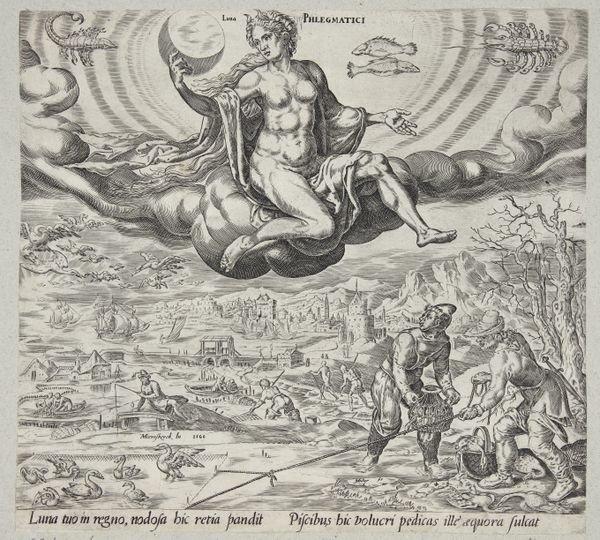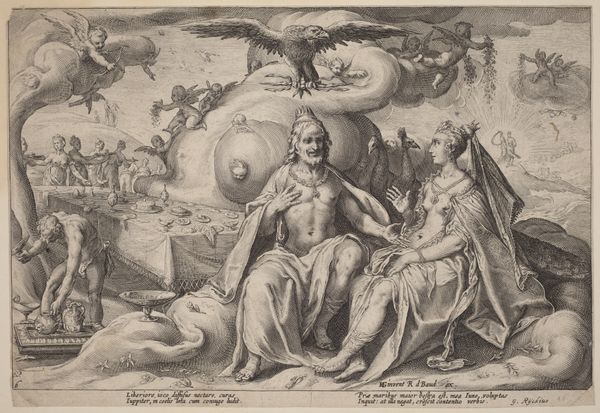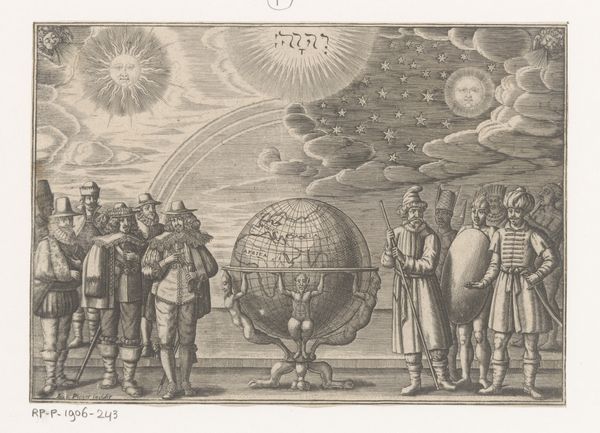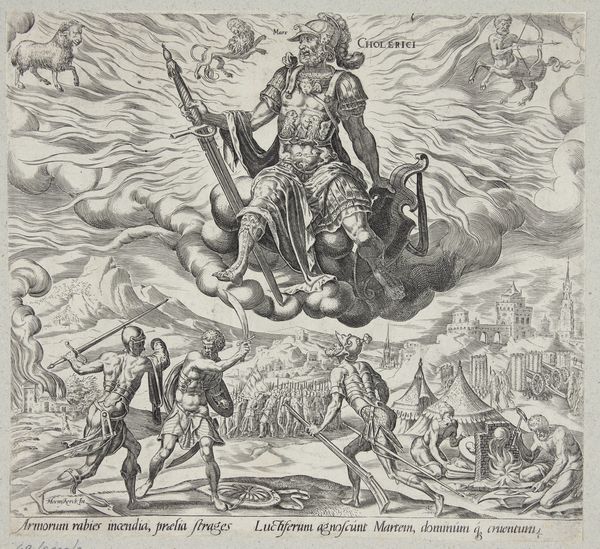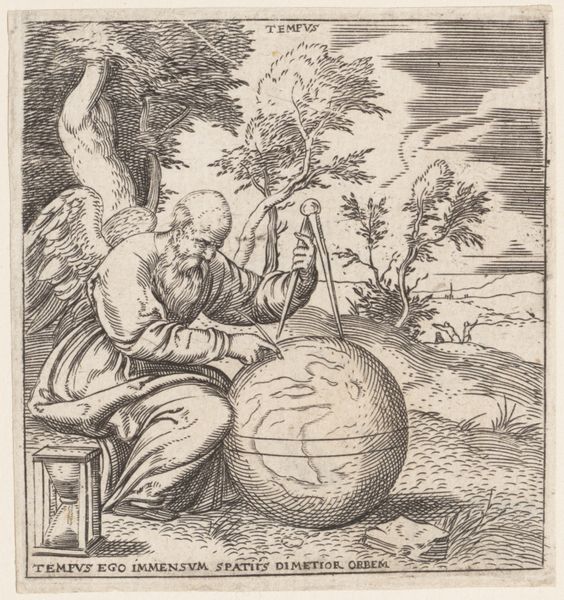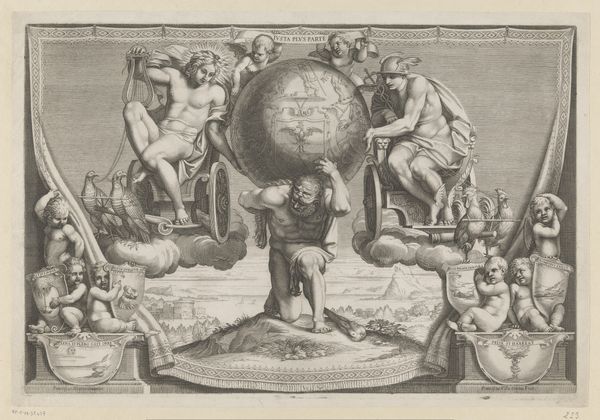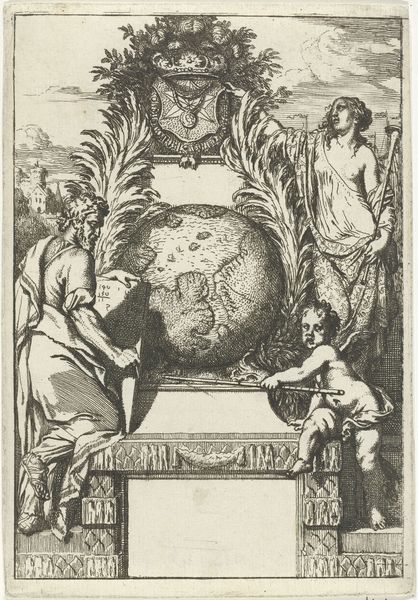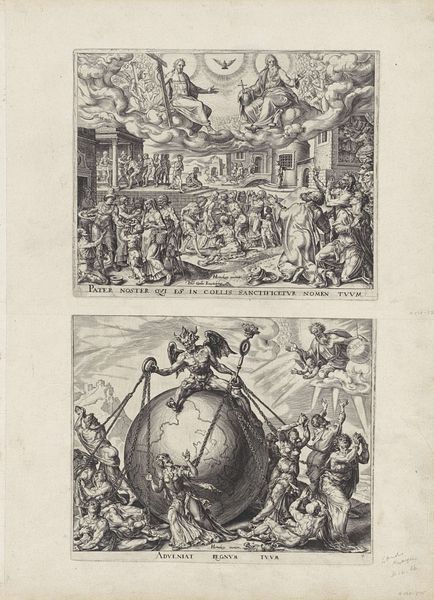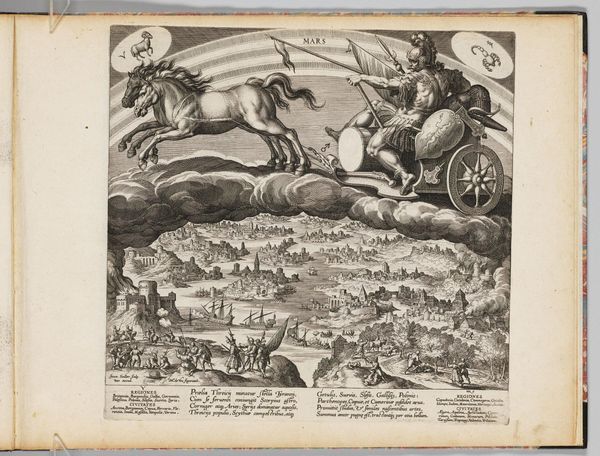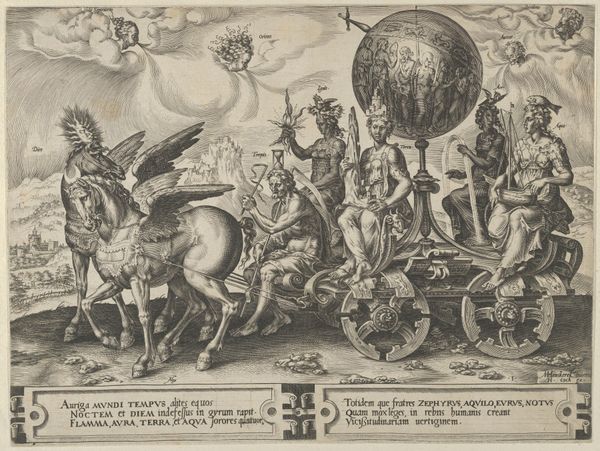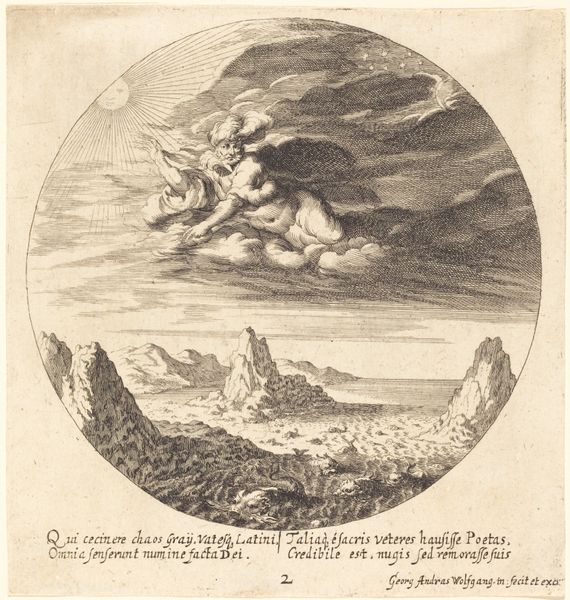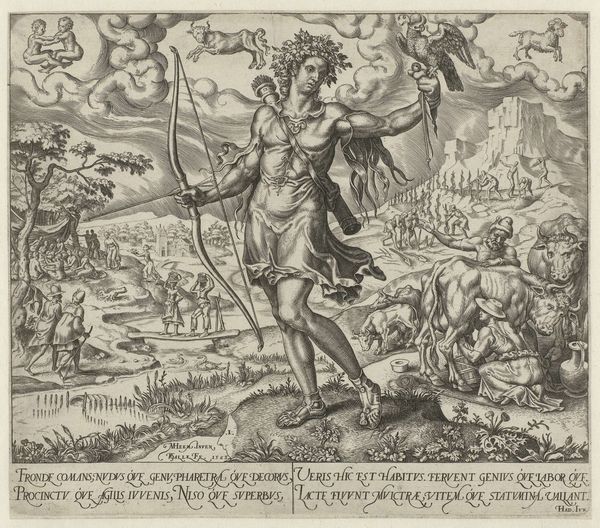
Man Born to Toil, from The Reward of Labour and Diligence, plate 1 1572
0:00
0:00
drawing, print, engraving
#
drawing
#
allegory
#
narrative-art
# print
#
landscape
#
bird
#
mannerism
#
figuration
#
personal sketchbook
#
history-painting
#
engraving
Dimensions: Sheet: 8 3/16 × 9 13/16 in. (20.8 × 25 cm)
Copyright: Public Domain
Curator: We're looking at "Man Born to Toil, from The Reward of Labour and Diligence, plate 1," an engraving made by Philips Galle in 1572. It's quite striking. What are your initial thoughts? Editor: My first impression is one of tension. There’s this chaotic globe of tools suspended above a landscape with a nursing mother, and a bird hovering overhead—it all feels very loaded, allegorical even. Curator: Indeed. The formal composition immediately establishes that allegorical framework. The sphere is filled with tools representative of various trades, from carpentry to agriculture. Galle’s technique creates a dense, almost claustrophobic feel within the orb itself. Note the precise rendering and detail, characteristic of the Mannerist style. Editor: I see it as a commentary on the social role of labor in the 16th century. The figure of "Nature" nurturing a child while also presenting a world defined by labor raises interesting questions. Is Galle suggesting that human existence is inherently tied to work, or is he critiquing the burdens placed on the working class? Curator: It’s difficult to ignore the contrast. The classically inspired "Nature" seems very disconnected from the chaotic jumble of instruments and implements; perhaps we should also read Nature as a system in service of production and human utility, despite an apparent beneficence in lactation? I am wondering what theoretical basis he uses in portraying the human connection to their environs? Editor: Or even how labor is gendered here. The emphasis on human toil seems inextricably linked to ideas about family, motherhood, and provision. Also, given the turbulent political climate of the time, rife with religious conflicts and social unrest, the engraving’s narrative around "reward" might also carry multiple ironic readings in the lives of everyday workers, which directly counters a message celebrating labour and diligence. Curator: A provocative proposition, but it may depend on your position. Returning to the visuality, that sphere dominates the composition, does it also suggest labor as a cosmic, inescapable force—shaping even nature? Editor: Perhaps. Regardless, Galle’s print presents us with a dense symbolic tapestry, inviting multiple interpretations about the role of labor, nature, and human existence during a turbulent historical moment. Curator: Precisely. Whether as a meditation or a pointed social critique, Galle delivers a compelling visual argument on his philosophy of art and science.
Comments
No comments
Be the first to comment and join the conversation on the ultimate creative platform.

